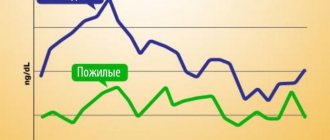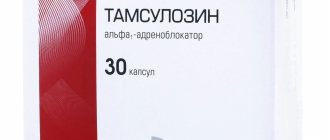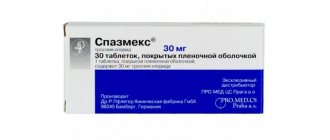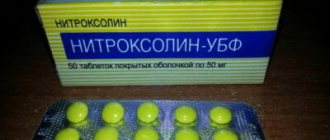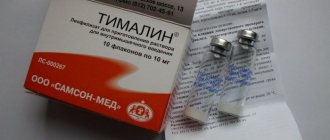Pharmacological properties
Pharmacodynamics
Exemestane is an irreversible steroidal aromatase inhibitor, the structure of which resembles the natural substance androstenedione.
In postmenopausal women, estrogens are produced primarily as a result of the conversion of androgens to estrogens under the influence of the aromatase enzyme in peripheral tissues. Prevention of estrogen formation through aromatase inhibition is considered an effective and selective treatment for hormone-dependent breast cancer in postmenopausal patients.
Exemestane irreversibly binds to the active component of the enzyme, which leads to its inactivation. According to confirmed data, the use of Aromasin in postmenopausal women reduces the level of estrogen in the blood serum when taking a dose of 5 mg or more, with the maximum reduction (more than 90%) observed when the drug is prescribed at a dose of 10–25 mg. In postmenopausal women diagnosed with breast cancer who receive 25 mg of exemestane daily, total body aromatase levels are reduced by 98%.
Exemestane is not characterized by estrogenic and progestogenic activity. Only minor androgenic activity was detected, mainly when taking high doses. The substance does not participate in the processes of biosynthesis of aldosterone and cortisol in the adrenal glands, which proves the selectivity of the drug. Therefore, replacement therapy with mineralocorticoids and glucocorticoids is not necessary. When prescribing the drug, even in small doses, a slight increase in the content of luteinizing hormone and follicle-stimulating hormone in the blood serum is observed. This is due to the fact that a decrease in the level of estrogen in the body stimulates the production of gonadotropins in the pituitary gland also in postmenopausal patients.
Pharmacokinetics
After oral administration, exemestane is rapidly absorbed, mainly from the gastrointestinal tract. The absolute bioavailability of the substance has not been established, but there are suggestions that it depends on the extensive “first pass” effect through the liver. With a single dose of 25 mg, the maximum plasma concentration of exemestane, 17 ng/ml, is achieved after 2 hours. When taking the drug with food, its bioavailability increases by 40%.
Pharmacokinetic parameters are characterized by a linear relationship. The terminal half-life is approximately 24 hours. The active component of Aromasin binds to plasma proteins by approximately 90%. Exemestane and its metabolites do not bind to red blood cells. Repeated administration does not lead to unpredictable accumulation of the substance.
Biotransformation of exemestane is carried out through oxidation of the methylene group in the 6th position under the influence of the CYP3A4 isoenzyme and/or reduction of the 17-keto group under the influence of aldokereductase with further conjugation. Metabolites of exemestane are either inactive or have less aromatase inhibitory activity than the parent compound.
Exemestane is excreted in urine and feces over the course of a week in approximately equal amounts (about 40%). 0.1–1% of the substance is excreted unchanged in the urine.
The patient's age and systemic exposure to Aromasin are not directly related. In patients with severe renal failure (creatinine clearance less than 30 ml/min), the systemic exposure of the drug is 2 times higher, but no dose adjustment is required. In patients with moderate or severe hepatic impairment, the systemic exposure of the drug is 2-3 times higher, but there is no need for dose adjustment.
Side effects of the drug Aromasin
The observed side effects of the drug were mild or moderate. Due to side effects, the drug was discontinued in 6.3% of patients with early breast cancer who were treated with Aromasin after initial tamoxifen therapy, and in 2.8% of patients with advanced breast cancer who received the standard dose of 25 mg. In patients with early stage cancer, the most common drug-related or unknown side effects were flushing (21%), arthralgia (18%), and fatigue (16%). In patients with advanced breast cancer, the most common side effects were flushing (14%) and nausea (12%). Most adverse reactions may be due to pharmacological consequences of blocking the effects of estrogens. Below are side effects from various organs and systems of the body, grouped by frequency of occurrence (very common (10%), common (1%, but ≤10%), uncommon (0.1%, but ≤1%), rare ( 0.01%, but ≤0.1%). Metabolic and metabolic disorders: often - anorexia. Mental disorders: very often - insomnia; often - depression. Neurological disorders: very often - headache; often - dizziness, carpal tunnel syndrome. Vascular disorders: very often - flushing. Digestive disorders: very often - nausea; often - abdominal pain, vomiting, constipation, dyspepsia, diarrhea. Disorders of the skin and subcutaneous tissue: very often - increased sweating; often - rash, alopecia. Disorders of the musculoskeletal system: very often - pain in the joints and muscles (arthralgia, to a lesser extent - pain in the limbs, back, osteoarthritis, arthritis, myalgia, stiffness in the joints), often - osteoporosis, fractures bones General disorders: very often - fatigue; often - pain, peripheral edema, including swelling of the legs. A decrease in the number of lymphocytes was noted in approximately 20% of patients taking Aromasin, especially in patients with initial lymphopenia, but the average number of lymphocytes did not change significantly in these patients for quite a long time; There was also no increase in the incidence of viral infections. In studies comparing therapy with Aromasin and tamoxifen in patients with early stages of breast cancer, there were no differences in the incidence of myocardial ischemia, cardiovascular events, including hypertension (arterial hypertension), myocardial infarction, and heart failure. The incidence of peptic ulcers with Aromasin is slightly increased compared with tamoxifen (0.7 versus ≤0.1). The majority of patients who reported peptic ulcers were taking concomitant NSAID treatment concomitantly with exemestane therapy and/or had a history of peptic ulcers. An increase in liver function tests was detected, which included determining the activity of liver enzymes, bilirubin and alkaline phosphatase levels.
Indications for use
- Treatment of advanced breast cancer in women in induced or natural postmenopause (treatment with the drug is indicated after undergoing various types of hormonal therapy, as well as in cases of disease progression during anti-estrogenic therapy);
- Adjuvant therapy for early breast cancer in estrogen receptor-positive postmenopausal women (after completion of initial adjuvant therapy with tamoxifen to reduce the risk of recurrence).
Use of the drug Aromasin
adult patients, including the elderly, are prescribed 25 mg orally once a day, preferably after meals. In patients with early-stage breast cancer, treatment with Aromasin should be continued until completion of 5 years of adjuvant hormonal therapy or until local or distant metastases or a new contralateral tumor occurs. In patients with advanced breast cancer, treatment with Aromasin should be continued until tumor progression becomes apparent. Patients with insufficiency of liver or kidney function do not require dose adjustment. Children The drug is not recommended for use in children.
Overdose
A single dose of Aromasin that can lead to the development of fatal symptoms has not been established. Taking the drug in a single dose of up to 800 mg in healthy women and in a daily dose of up to 600 mg in postmenopausal women with extensive breast cancer does not cause side effects.
There are no specific antidotes. If necessary, carry out symptomatic therapy. Patients who take Aromasin in high doses should remain under medical supervision for some time. Regular monitoring of vital signs is also recommended.
special instructions
No dose adjustment is required for renal or hepatic impairment.
The drug should not be taken simultaneously with medications containing estrogens.
Impact on the ability to drive vehicles and complex mechanisms
Patients should be warned about the possibility of side effects such as dizziness, drowsiness and asthenia occurring during the course of therapy. If these symptoms occur, it is recommended to refrain from driving vehicles and engaging in other potentially hazardous activities that require special concentration and immediate reactions.
Similar drugs:
- Metoject Solution for injection
- Letrozole Oral tablets
- Wartec Cream for external use
- Medroxyprogesterone acetate Substance-powder
- Imuran Oral tablets
- Zoladex Capsule
- Paclitaxel Substance-powder
- Lomustine Oral tablets
- Votrient Oral tablets
- Cyclophosphan Substance-powder
** The Drug Directory is intended for informational purposes only. For more complete information, please refer to the manufacturer's instructions. Do not self-medicate; Before starting to use the drug Aromasin, you should consult a doctor. EUROLAB is not responsible for the consequences caused by the use of information posted on the portal. Any information on the site does not replace medical advice and cannot serve as a guarantee of the positive effect of the drug.
Are you interested in the drug Aromasin? Do you want to know more detailed information or do you need a doctor's examination? Or do you need an inspection? You can make an appointment with a doctor - the Euro lab is always at your service! The best doctors will examine you, advise you, provide the necessary assistance and make a diagnosis. You can also call a doctor at home . Euro lab clinic is open for you around the clock.
** Attention! The information presented in this medication guide is intended for medical professionals and should not be used as a basis for self-medication. The description of the drug Aromasin is provided for informational purposes only and is not intended for prescribing treatment without the participation of a doctor. Patients need to consult a specialist!
If you are interested in any other drugs and medications, their descriptions and instructions for use, information about the composition and form of release, indications for use and side effects, methods of use, prices and reviews of drugs, or you have any other questions and suggestions - write to us, we will definitely try to help you.
Drug interactions
Estrogen-containing drugs completely neutralize the pharmacological effect of Aromasin. Its active substance is metabolized by cytochrome P450 CYP3A4 and aldokereductases, and therefore is not capable of inhibiting any of the main CYP isoenzymes.
Ketoconazole specifically inhibits the CYP3A4 isoenzyme, but a confirmed effect of this on the pharmacokinetics of exemestane has not been identified. Although exemestane pharmacokinetically interacts with rifampicin, a powerful inducer of the CYP3A4 isoenzyme, the pharmacological effect of Aromasin remains unchanged, so dose adjustment is not required.
Release form and composition of Aromasin
The drug is available in the form of sugar-coated tablets.
The main active ingredient of Aromasin is exemestane.
The excipients are: hypromellose, mannitol, polysorbate 80, hydrated colloidal silicon dioxide; crospovidone, sodium carboxymethyl starch, magnesium stearate, MCC.
The composition of Aromasin's sugar shell includes: polyvinyl alcohol, simethicone emulsion, hypromellose, methyl p-hydroxybenzoate, magnesium carbonate, macrogol 6000, titanium dioxide, sucrose.

